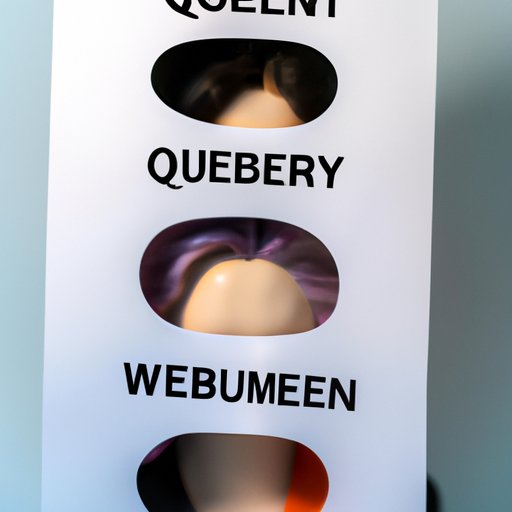Introduction
It is important to understand and celebrate the diverse identities and experiences of queer women. This article aims to provide information and insight into the world of queer women, exploring the complexities and fluidity of their identities and highlighting their contributions and triumphs within society.
Defining Queer Women: An Exploratory Guide
The term “queer” has evolved over time and is now used as an umbrella term for those who do not fit within traditional cisgender and heterosexual norms. Queer women can refer to women who identify as lesbian, bisexual, pansexual, asexual, or any other non-heterosexual orientation. It can also include those who identify as non-binary, trans, or genderqueer. It is essential to note that there is great diversity within the queer community, and each individual’s experiences may vary.
Celebrating Queer Women: A Look at their Identities and Lifestyles
Queer women come from all walks of life, and their lifestyles and identities are just as diverse as the communities they belong to. Notable examples of queer women include Ellen DeGeneres, a pioneering figure for the LGBTQ+ community, and Laverne Cox, a transgender actress and advocate. It is crucial to dispel stereotypes and misconceptions about queer women, emphasizing that they are more than just their sexual orientation or gender identity.
The Intersection of Sexuality and Gender Identity in Queer Women
Sexuality and gender identity are complex dimensions that intersect in unique and individual ways for queer women. Some may identify as lesbian and cisgender, while others may identify as non-binary and pansexual. It is important to understand and celebrate this diversity while also recognizing the challenges queer women face in navigating these complex identities and the societal pressures that come with them.
The Significance of Visibility for Queer Women: Challenges and Triumphs
Visibility is essential for the queer community, as it provides representation and validates their existence and experiences. However, queer women face numerous barriers to visibility, such as discrimination and invisibility. Despite these challenges, queer women have celebrated numerous triumphs in recent years, such as the election of Sarah McBride, the first openly transgender state senator in the United States.
Embracing Fluidity: Understanding the Complexities of Queer Women’s Identities
Queer women’s identities are fluid and may shift over time, and it is essential to embrace these complexities and reject the notion of rigid labels. It is crucial to acknowledge that queer women’s experiences are valid, regardless of how they choose to express themselves or their orientations or identities. Embracing fluidity allows queer women to explore and understand themselves fully, leading to self-acceptance and self-love.
The Evolution of Language: Labeling, Labels, and Queer Women
The language surrounding queer identities has evolved significantly in recent years, with new labels and terms emerging to reflect the richness and diversity of individual experiences. However, labeling can be a double-edged sword, with some individuals feeling pigeonholed by rigid labels. It is crucial for queer women to self-identity and self-accept, regardless of societal labels and expectations.
The Experiences of Queer Women Across Different Cultures and Societies
Queer women’s experiences vary drastically across different cultures and societies, with some contexts being more accepting and others being more hostile. The intersection of queerness with other factors, such as race, class, and ability, can further complicate and shape queer women’s experiences. While some societies may have made great strides in LGBTQ+ rights and acceptance, many still have a long journey ahead towards full inclusivity and representation.
Conclusion
It is essential to understand and celebrate the diverse identities and experiences of queer women. The challenges and opportunities for allyship and support must be discussed, as well as the need for further research to better understand and advocate for the queer community as a whole. We must continue to work towards greater visibility, representation, and acceptance for all members of the LGBTQ+ community, including queer women.
